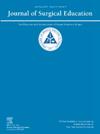Evaluation of a Cost-Effective Virtual Reality Training System in Oral Maxillofacial Surgery: A Pilot Study
IF 2.6
3区 医学
Q1 EDUCATION, SCIENTIFIC DISCIPLINES
引用次数: 0
Abstract
INTRODUCTION
Virtual reality (VR) is increasingly being explored in surgical education for its potential to create immersive training environments. However, many VR systems are expensive and require complex setups, limiting their accessibility. This survey study assesses the feasibility of cost-effective VR training on the education of oral maxillofacial surgical trainees and practitioners. Given the limited opportunities for hands-on practice in performing major surgical procedures, cost-effective VR training can provide an essential and accessible platform for developing surgical skills.
MATERIALS AND METHODs
Cadaver surgery videos of complex maxillofacial procedures were created in 360° VR and 2D formats and published on YouTube. Trainees enrolled in a cadaver course were surveyed after viewing both formats. Fifteen trainees completed questionnaires comparing their learning experiences, with responses analyzed using Fisher's exact test.
RESULTS
About 73.3% of participants found the VR video improved their understanding of the procedure, and over 75% reported enhanced spatial awareness. However, 86.6% experienced discomfort or motion sickness. In comparison, 66.6% felt the 2D video helped their understanding, and only 40% found it improved spatial awareness. No statistically significant difference was found between the VR and 2D formats for procedural understanding or spatial awareness. Notably, participants rated the VR video as more intuitive and user-friendly compared to the standard 2D video, with the difference achieving statistical significance. Overall, 66.6% preferred the VR format, while 33.3% favored 2D.
CONCLUSION
This feasibility study highlights the utility of a cost-effective VR solution for enhancing maxillofacial surgery training, providing a practical option for preparing trainees for real-life scenarios.
评估一个具有成本效益的虚拟现实训练系统在口腔颌面外科:一项试点研究
虚拟现实(VR)在外科教育中越来越多地被探索,因为它有创造沉浸式训练环境的潜力。然而,许多VR系统价格昂贵,需要复杂的设置,限制了它们的可访问性。本调查研究评估具有成本效益的虚拟现实培训在口腔颌面外科培训生和从业人员教育中的可行性。考虑到在实施重大外科手术中实践的机会有限,成本效益高的VR培训可以为发展外科技能提供一个必要的和可访问的平台。材料与方法采用360°VR和2D格式制作复杂颌面手术视频,并在YouTube上发布。参加尸体课程的学员在观看了这两种格式后接受了调查。15名受训者完成问卷,比较他们的学习经历,并使用Fisher的精确检验对回答进行分析。结果约73.3%的参与者认为VR视频提高了他们对程序的理解,超过75%的参与者表示增强了空间意识。然而,86.6%的人感到不适或晕车。相比之下,66.6%的人认为2D视频有助于他们的理解,只有40%的人认为它提高了空间意识。在程序理解或空间意识方面,VR和2D格式之间没有统计学上的显著差异。值得注意的是,与标准的2D视频相比,参与者认为VR视频更加直观和用户友好,差异具有统计学意义。总体而言,66.6%的人更喜欢VR格式,33.3%的人更喜欢2D格式。结论本可行性研究强调了一种具有成本效益的VR解决方案在加强颌面外科培训中的实用性,为学员准备现实场景提供了一种实用的选择。
本文章由计算机程序翻译,如有差异,请以英文原文为准。
求助全文
约1分钟内获得全文
求助全文
来源期刊

Journal of Surgical Education
EDUCATION, SCIENTIFIC DISCIPLINES-SURGERY
CiteScore
5.60
自引率
10.30%
发文量
261
审稿时长
48 days
期刊介绍:
The Journal of Surgical Education (JSE) is dedicated to advancing the field of surgical education through original research. The journal publishes research articles in all surgical disciplines on topics relative to the education of surgical students, residents, and fellows, as well as practicing surgeons. Our readers look to JSE for timely, innovative research findings from the international surgical education community. As the official journal of the Association of Program Directors in Surgery (APDS), JSE publishes the proceedings of the annual APDS meeting held during Surgery Education Week.
 求助内容:
求助内容: 应助结果提醒方式:
应助结果提醒方式:


